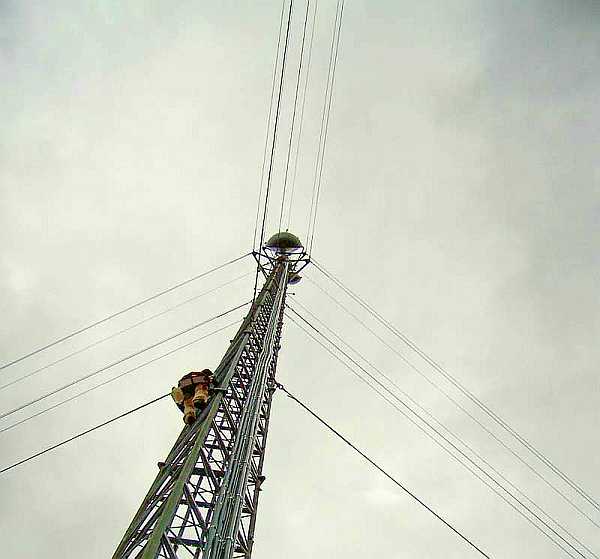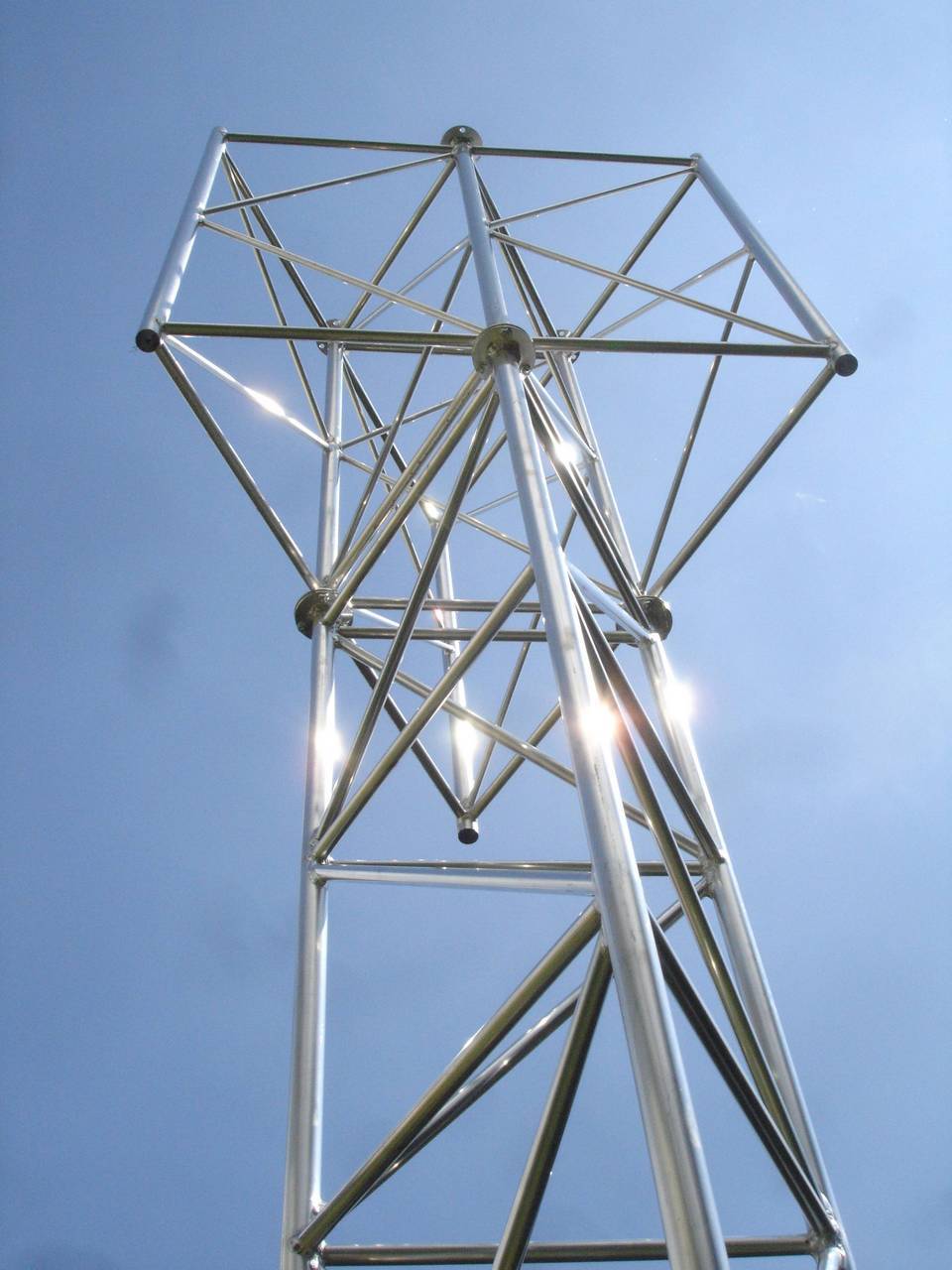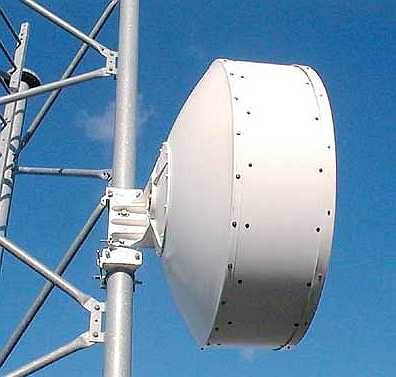Questions and Answers
-

How to properly arrange mast guy wires?
Read more: How to properly arrange the mast guy wires?The general rule is that it is best to place the guy wires symmetrically – for three-kerb masts, every 120 degrees when viewed in the horizontal plane. As for the distance of the guy wire from the mast truss in the vertical plane – it is generally accepted that the distance of the anchor point cannot be less than half the height of the mast. For example, for a 50-meter mast, the anchoring mark…
-

How to install antennas on a mast safely for the structure?
Read more: How to install antennas on a mast in a safe way for the structure?A telecommunications mast, like any truss, has node points that are its strongest points. It is worth applying all forces precisely in the vicinity of the nodes, because this minimizes the risk of damage to the whole. This is important when installing additional guy lines, securing ropes during the erection of the mast using the rotation technique, or even when choosing anchor points for antenna booms. A node point is a place…
-

What is a separation crown used for?
Read more: What is a separation crown used for?The crown has two tasks, the first is due to the need to move apart the transmitting antennas, e.g. sector antennas. The antennas have reverse radiation which can lead to interference and disturbances. Since the strength of the electromagnetic field decreases with the square of the distance - even a small separation significantly weakens the interaction of the antennas. It is worth checking the specifications of the devices in order to determine the minimum antenna separation recommended by the manufacturer. The second task…
-

Are there any antennas for which the stiffness of the mast structure is of particular importance?
Read more: Are there any antennas for which the stiffness of the mast structure is of particular importance?Yes, these are all types of radio lines (and satellite links), with a focused and directional transmission beam. Assuming a standard deviation of the mast from the vertical by 1:100 of the height, the height of the mast is 30 meters - the displacement of the top reaches 30 cm. Over a dozen kilometers of transmission, this gives a multi-hundred-meter antenna spread. One of the techniques to combat this unfavorable phenomenon is the installation of a crown...
-

How to choose the height of a mast or tower to suit our needs (the case of a radio link)?
Read more: How to choose the height of a mast or tower to suit our needs (the case of a radio link)?In telecommunications, optimal antenna placement is determined by Fresnel zones, which ensure that their area is free from obstacles and minimize energy losses.
-

How do I choose the right type of mast or tower for my antenna setup?
Read more: How do I choose the right type of mast or tower for my antenna setup?Both masts and towers are very resistant to vertical loads. Customers often ask us whether a mast will carry a specified amount of equipment in kilograms. The answer is almost always affirmative, because the lateral surface of the installed antennas is much more important than the weight for the statics of mast structures. The mast acts like a sail, generating large tearing forces on…
-

Folding or welded tower?
Read more: Folding or welded tower?Large telecommunications towers create delivery problems. Their lower segments are spatial structures with dimensions exceeding several meters wide. Most telecommunications towers available on the market are hybrid structures, in the sense that the lower segments are assembled from single pipes on site, while the upper ones are welded. This solution allows to minimize space during delivery, but nevertheless increases…
-

What to choose – mast or tower?
Read more: What to choose – mast or tower?The main difference between masts and towers is the convenience of use and the amount of space needed for their installation. There is also an economic aspect. In general, towers are more expensive, but they need much less space, while masts are cheaper, but the plot of land needed to accommodate the guy system must be much larger. Masts require periodic inspections, rope tension control, and in a critical situation they can…
Subscribe
Log in with your email address to receive our newsletter (quarterly)
Latest Questions and Answers
- Cooperation with SpaceForest
- Assembly for chemical anchors - description of the technique
- How to avoid frost cracks and their consequences?
- Optimization of the height of masts for the radio link.
- Stainless Steel – What Types?
Question Categories
- No categories (3)
- Prices (1)
- For architects (8)
- Stage Constructions (3)
- Materials science (6)
- Metallurgy (5)
- What's new in production (1)
- Law (4)
- Questions and Answers (20)
- Radio communication (4)
- Technologie (12)


